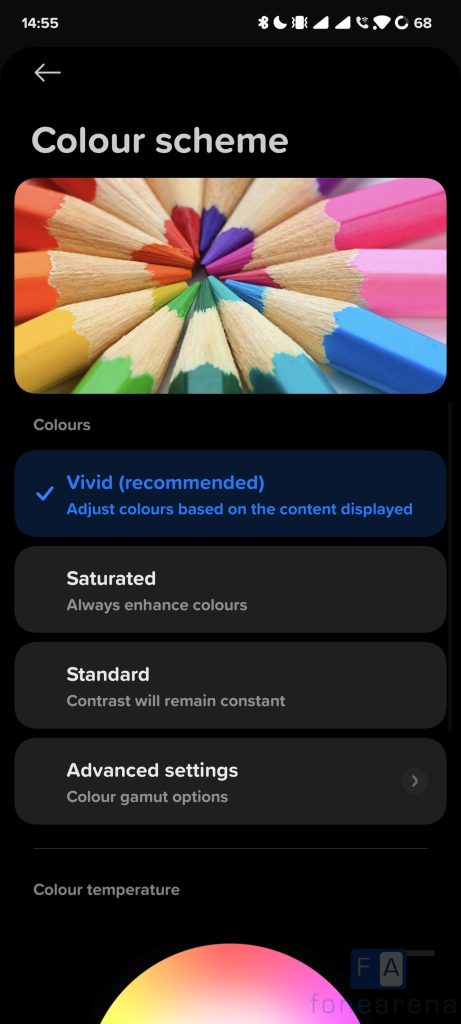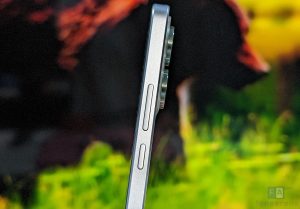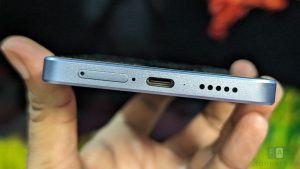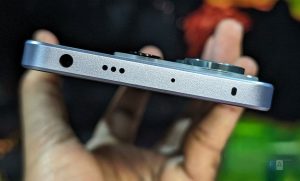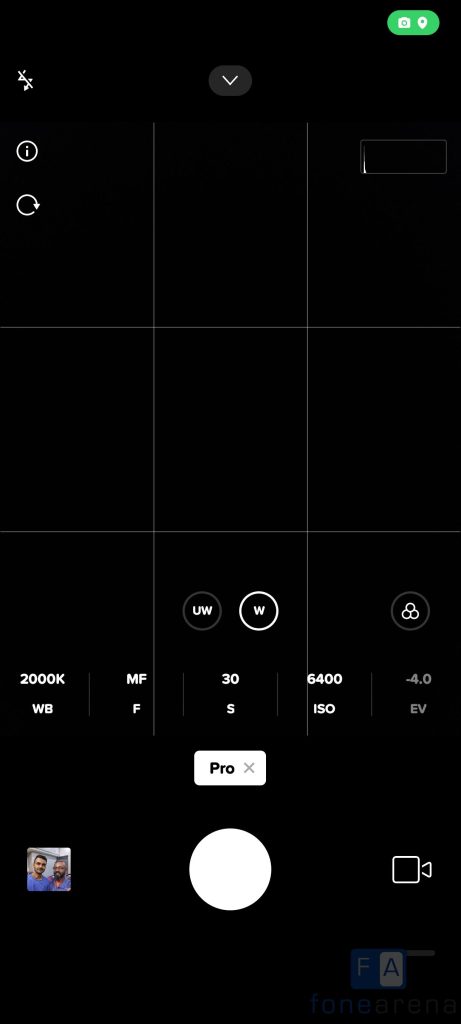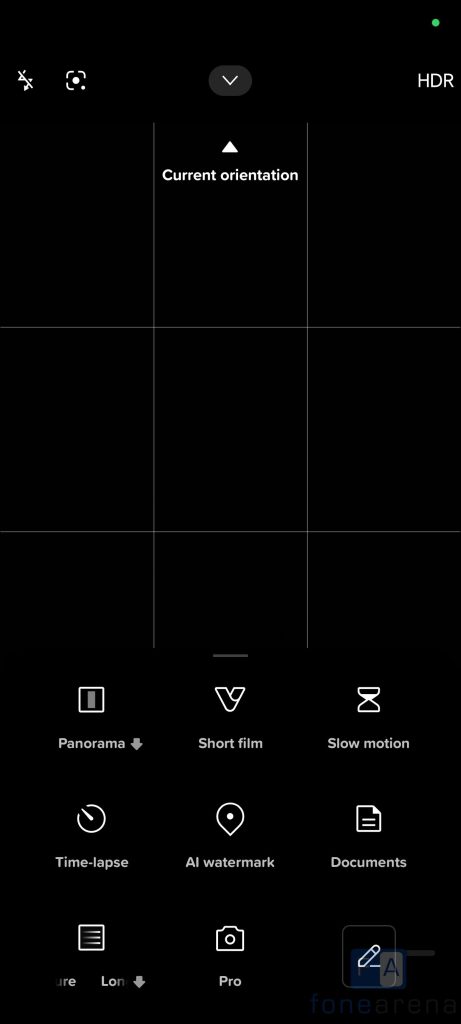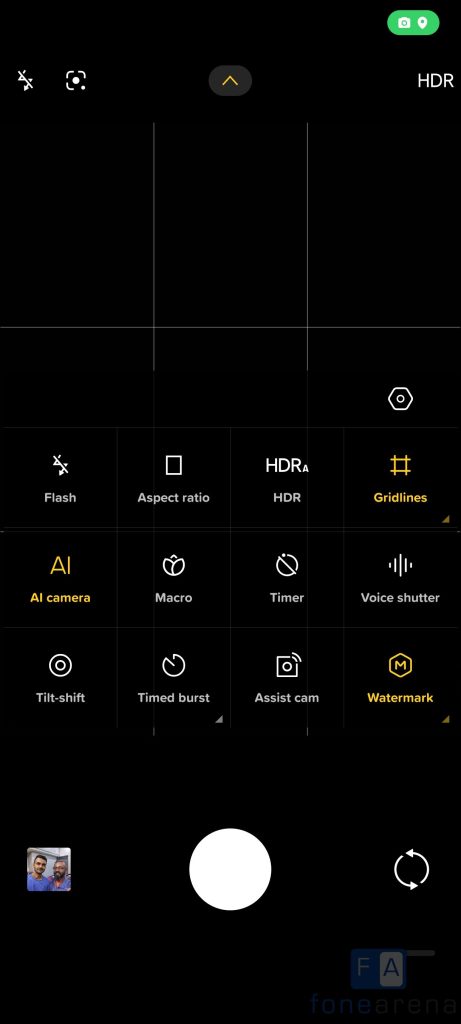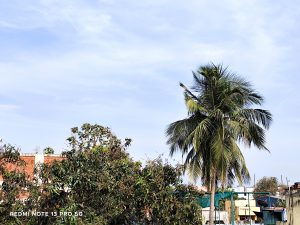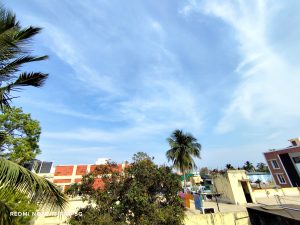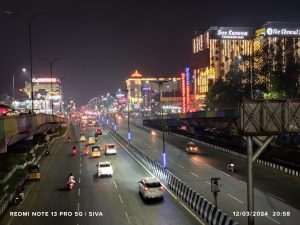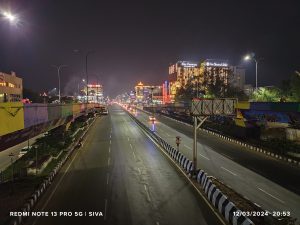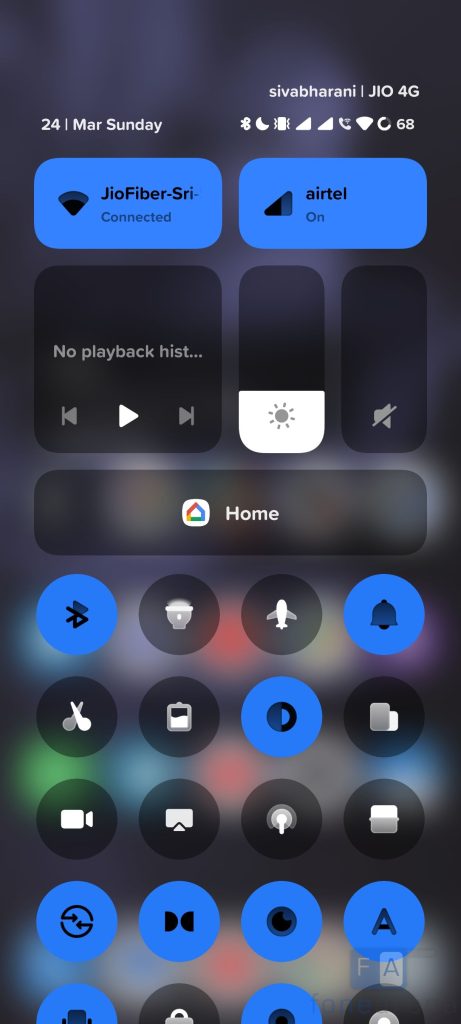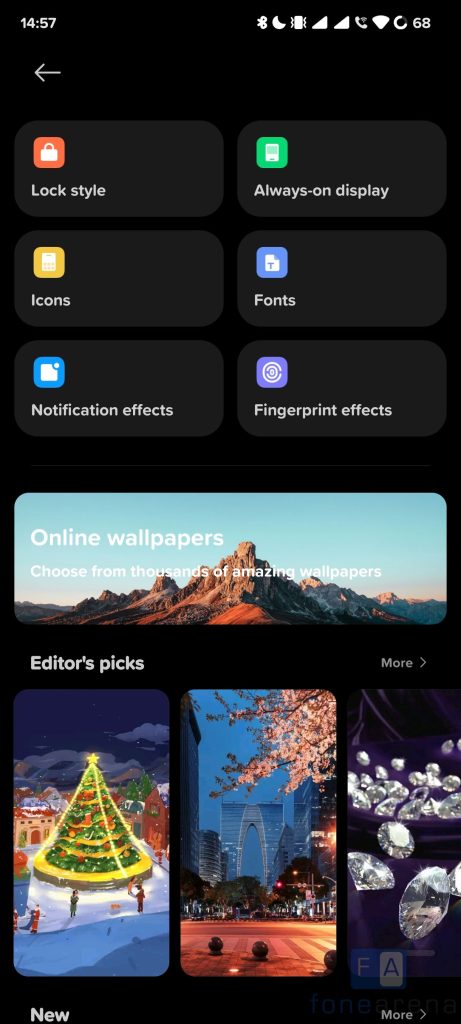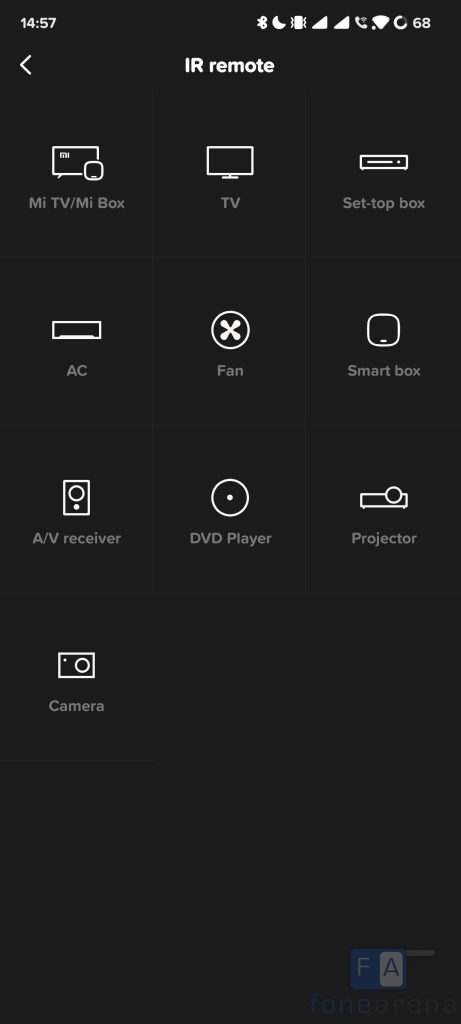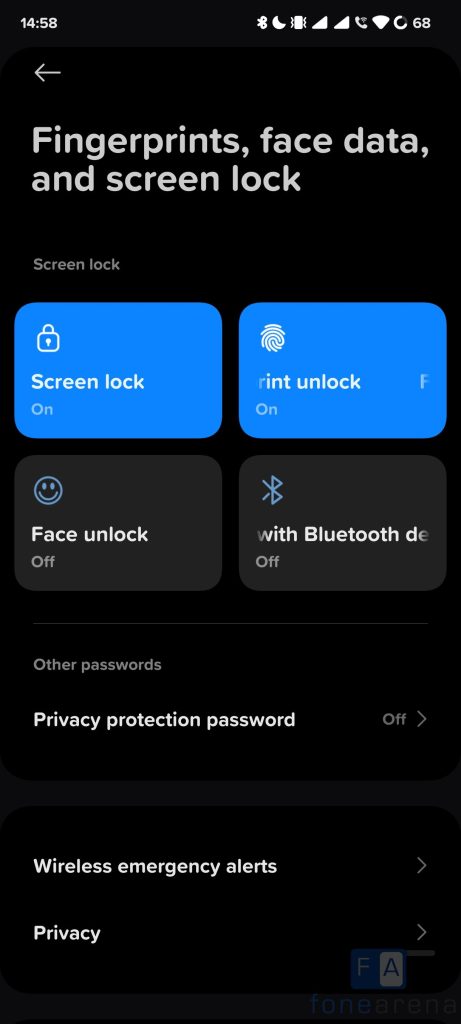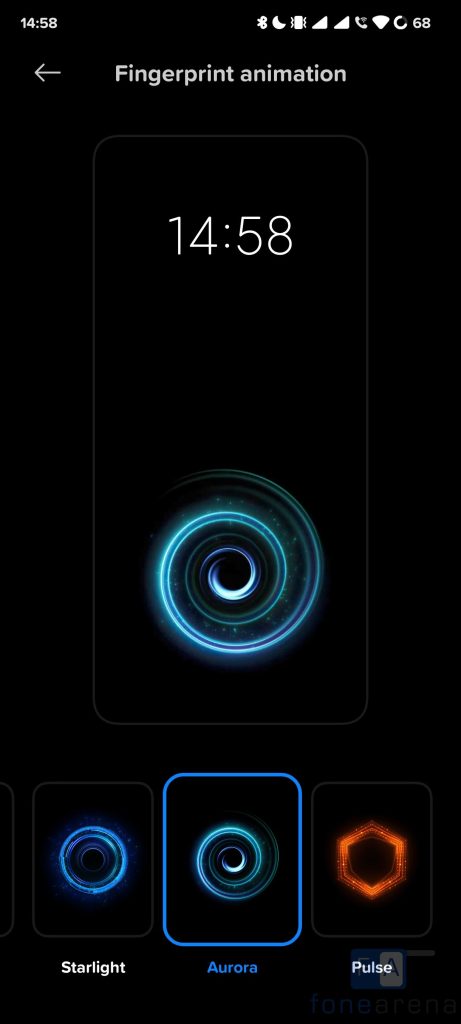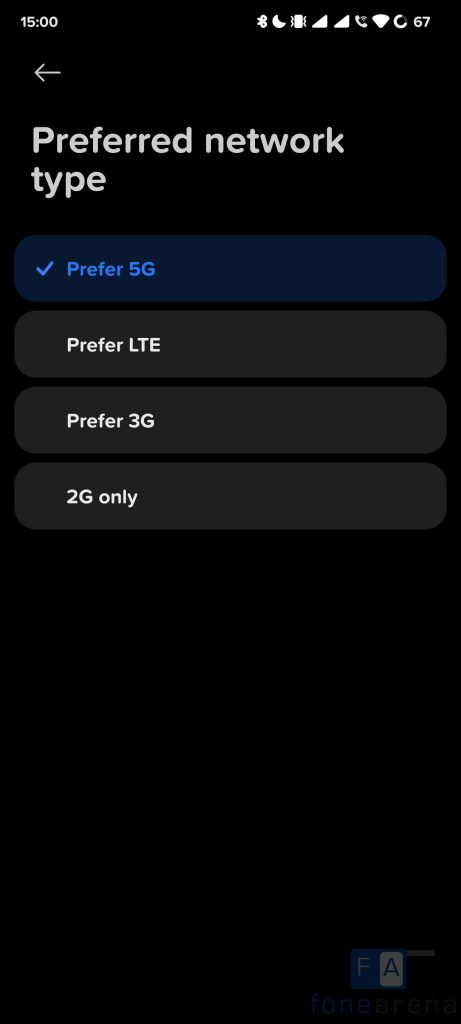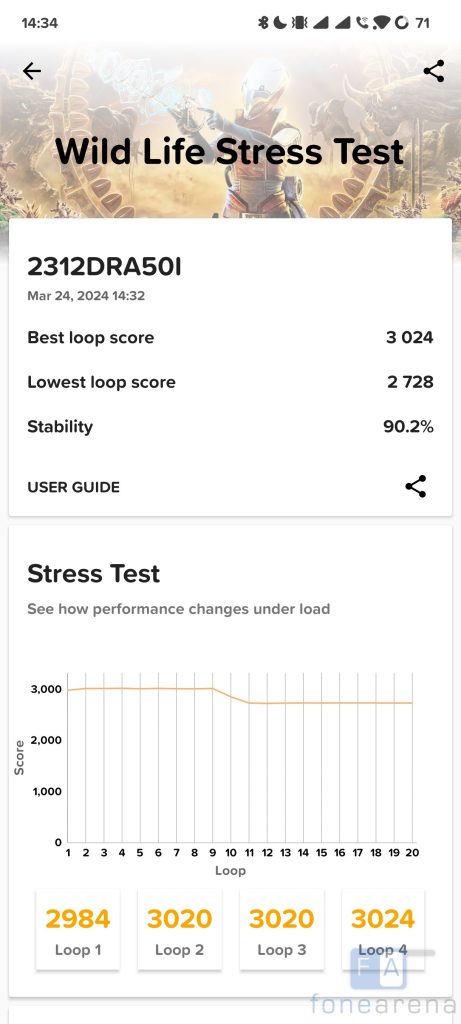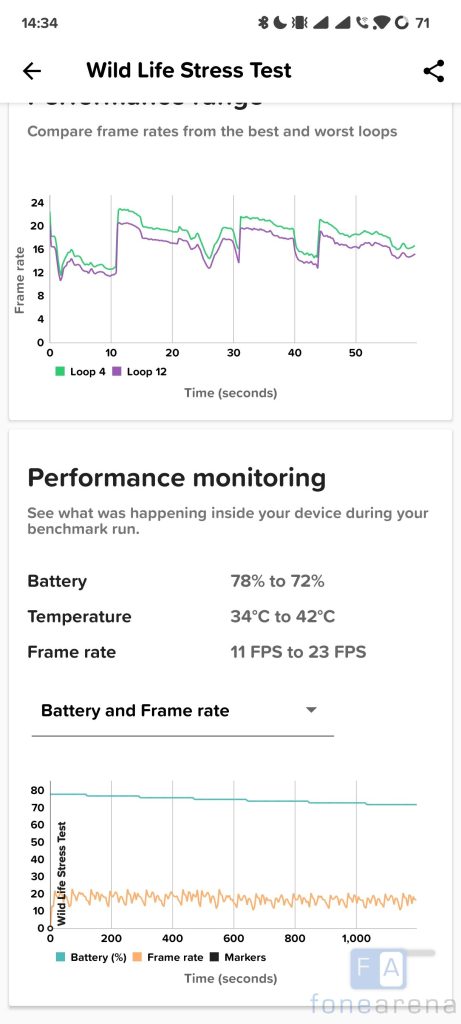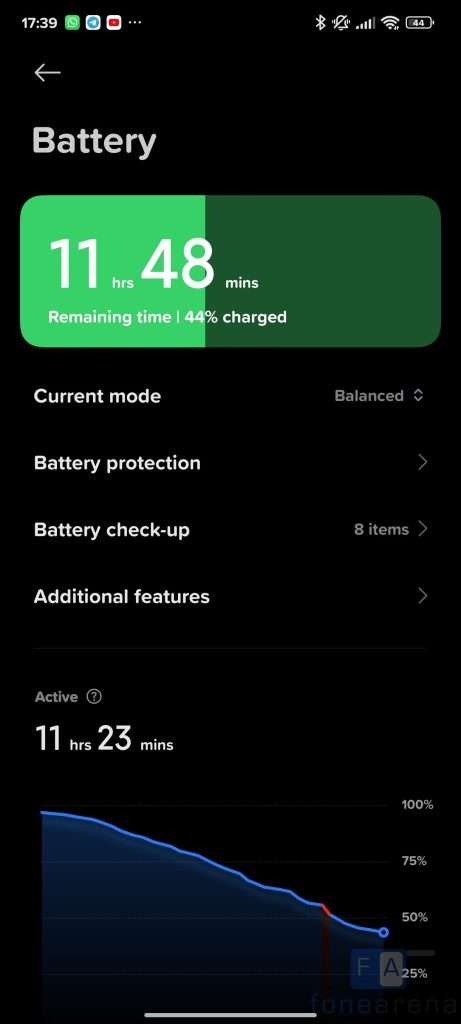
Xiaomi launched the Redmi Note 13 Pro series, the company’s latest mid-range 5G smartphones, in India earlier this year as the successor to last year’s Xiaomi 12 Pro series. These were launched in China last year, and the company has launched the phones in the same name in India without changing any features.
Even though the Redmi Note 12 Pro retains similar display, camera specs and design, the SoC, battery capacity and charging are different. Is the phone worth the price of Rs. 25,999 ? Let us dive into the review to find out.
| Box Contents |
| Camera |
| Battery Life |
| Conclusion |
Box Contents
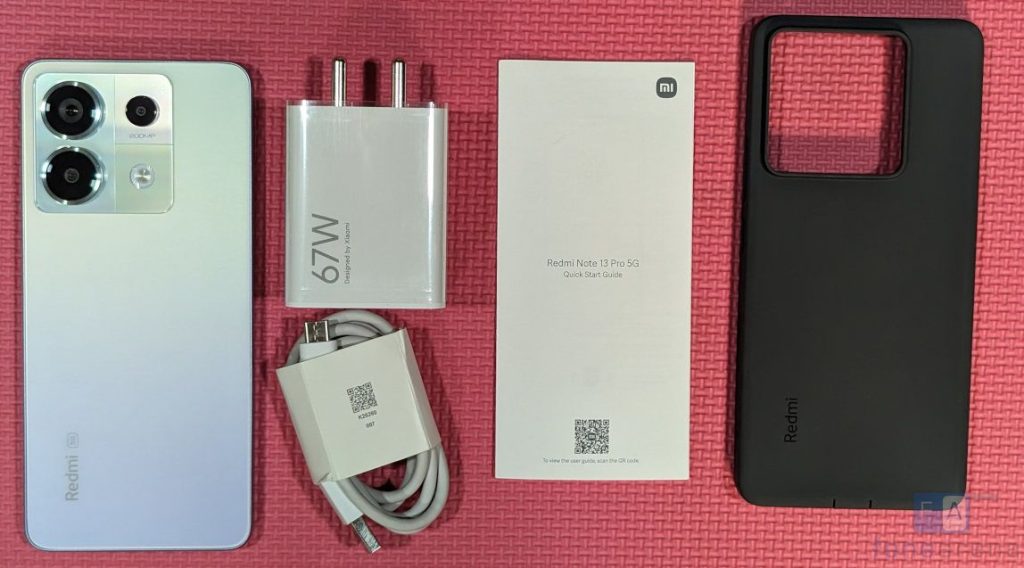
- Redmi Note 13 Pro 12GB + 256GB in Coral Purple colour
- 67W fast charger
- USB Type-C Cable
- SIM Ejector tool
- Clear protective case
- Screen protector (Pre-installed)
- User guide
Display, Hardware and Design
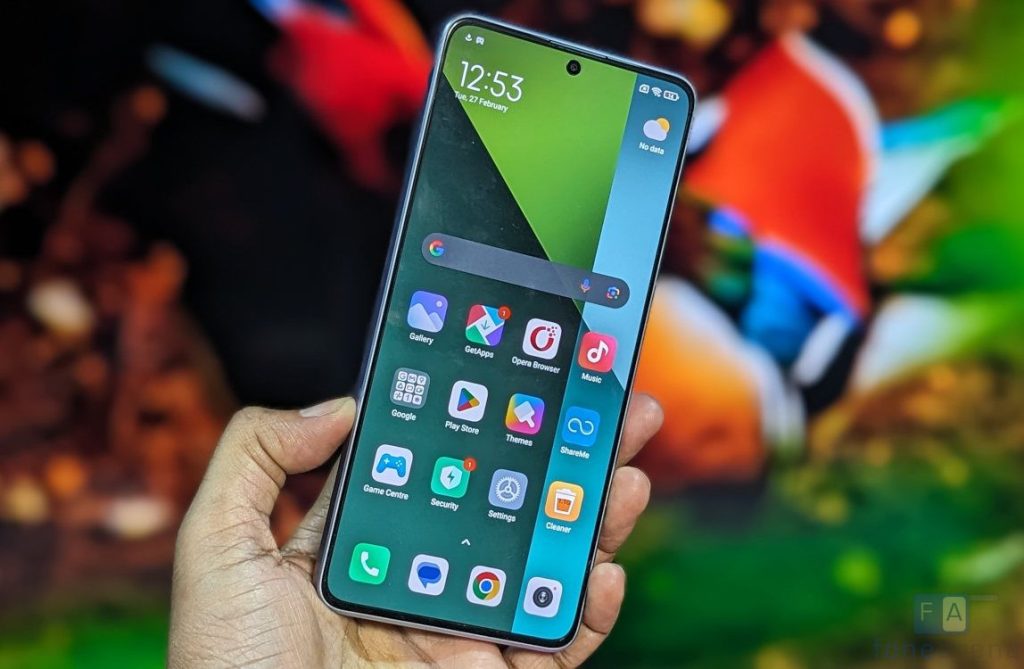
Starting with the display, the Redmi Note 13 Pro has a 6.67-inch 1.5K AMOLED display with a pixel resolution of 2712 x 1220 pixels, 20:9 aspect ratio and a pixel density of about 446 PPI. The display is bright, thanks to 1800 nits peak brightness, which is enabled when you are watching HDR content. It supports 100% DCI-P3 wide colour gamut, so the colours are vibrant. The display has seen major improvements both in terms of the resolution and the brightness compared to the older model.
It has 120Hz display refresh rate and 240Hz touch sampling rate, which when enabled offers a buttery smooth user experience, especially when you are scrolling through the UI and when gaming. This has adaptive refresh rate, so it can switch between 30Hz, 60Hz, 90Hz and 120Hz depending on the content. It also has HDR 10+ support, which works for YouTube and Netflix. There is also Dolby Vision support that works for Netflix. This is rarely seen in phones in the price range. The phone comes with Corning Gorilla Glass Victus protection.
Under the display options, there are different options to adjust colours and contrast based on your preference, reading mode that lets you reduce the display’s blue light emission. It also has, 1920Hz High Frequency PWM Dimming which is automatically enabled to reduce flicker in low brightness. The phone also has an always-on-display option, which can be enabled from display settings.

The phone has a tiny punch-hole that houses a 16-megapixel camera, which doesn’t disturb when watching videos since it just occupies a small space. Above the display there is an earpiece on the top edge which also doubles up as a secondary speaker.
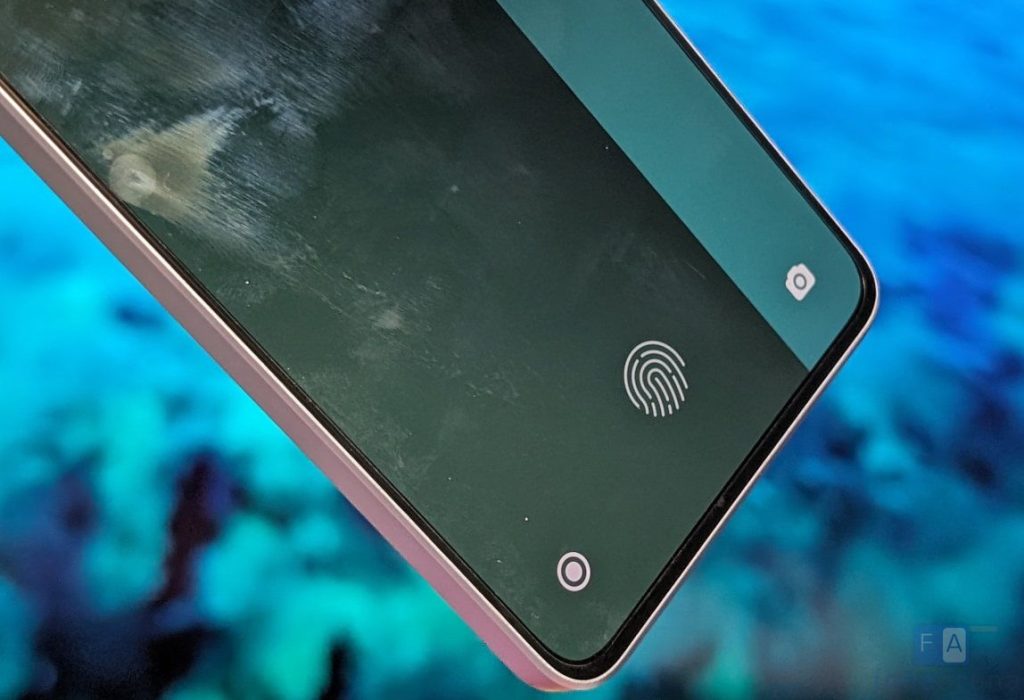
The phone has a 2.27mm ultra-narrow bottom bezel, which is good.
Coming to the button placements, the volume rockers and the power button are present on the right side of the phone. The dual SIM slot, loudspeaker grill, primary microphone and USB Type-C port are present on the bottom. On the top there is a 3.5mm audio jack, vent for speaker, secondary microphone and an infrared sensor. This lacks expandable storage.
Since the phone has a polycarbonate frame, you don’t see any antenna cutouts. The phone features an X-axis linear vibration motor, which enables custom vibration patterns across the UI for the best haptic experience.
Even though the phone has a large screen, it is easy to hold since it is 74.24mm wide, making it smaller than the Note 12 Pro even though this has the same screen size and the battery, thanks to slim bezels. It is also just 7.98mm thick and the weight distribution is good, so at 187 grams even with a huge 5100mAh battery, it feels light even with the glass back.
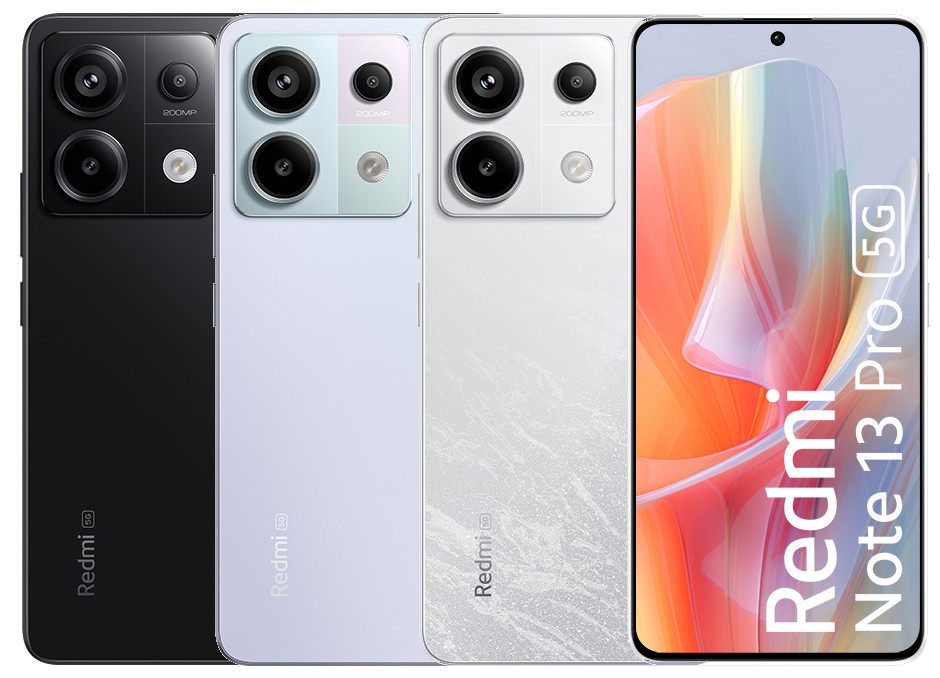
We have the Coral Purple colour. The phone also comes in Arctic White which has patterns and Midnight Black colours in India. Xiaomi says that it uses hardened AG matte glass on the back, so it doesn’t attract fingerprints. The phone also has IP54 ratings for dust and splash resistance, another upgrade compared to IP53 in the Note 12 Pro.
Camera
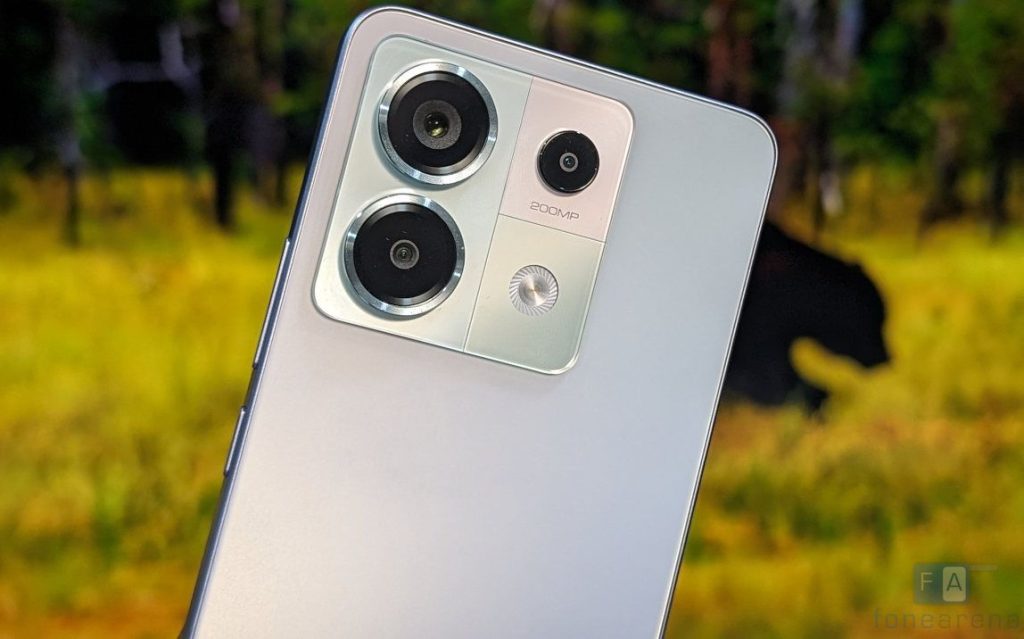
- 200MP rear camera with 1/1.4″ Samsung HP3 sensor, f/1.65 aperture, OIS
- 8MP 120° ultra-wide angle camera with f/2.2 aperture
- 2MP macro camera with f/2.4 aperture
- 16MP front camera with f/2.45 aperture
The camera UI is familiar with other Xiaomi or POCO smartphones running HyperOS. You get all the features such as Pro, Night, 50MP, Short Video, Panorama, VLOG, Slow motion, Time-lapse, Dual video, AI watermark, Long exposure and Pro mode lets you adjust white balance, focus, shutter speed (1/8000s to 30 seconds), ISO (50 to 6400) and option to select main, ultra-wide and macro lens. You can also shoot in RAW in Pro mode and enable focus peaking, exposure verification and more options.
Daylight shots came out well, thanks to the 200MP sensor, and the dynamic range is better with auto HDR. Even though there is no telephoto lens, it uses the software for offering up to 10x digital zoom. This is like taking an image and cropping up later. 2X and 4X are good, thanks to in-sensor zoom that lets the camera auto zoom and crop on a subject to keep it at the center of the frame. The 8MP wide-angle shots and the portrait mode is decent and the 2MP macro camera is useless, so it is recommended to use 2X or 4X zoom with the normal camera. The dedicated 2MP macro sensor is average.
Low-light shots are good, thanks to the sensor and tuning, and the night mode is even better, making the images brighter offering more details. In pro mode it was even better. Images with flash are good, and the flash is not overpowering. Daylight front camera shots from the 16-megapixel front camera are decent, but not the best even in daylight conditions. Output is 16MP in resolution. Portrait shots have good edge detection, even though it is done using software.
Check out the camera samples.
It can record videos at 4k resolution at 30 fps, 1080p at up to 60 fps, and it also has slow motion 1080p at up to 120 fps and 720p resolution video recording at up to 240fps. You can also shoot 1080p videos using the ultra-wide and 720p video using macro camera. Front camera supports up to 1080p 60fps recording.
Software, UI and Apps
The phone was launched running Android 13-based MIUI 14, and it got the Android 14-based HyperOS update a few weeks back. The update brought huge performance enhancements, lock screen personalization, Control Centre improvements, Interconnectivity features, and lots more. The company at the launch said that it will get 3 major Android updates and 4 years of security updates.
Since the phone has an infrared sensor for remote function, it comes with a Mi Remote that lets you control your home appliances easily. Out of 12GB LPDDR4X RAM, you get 11.02GB of usable RAM, and about 6GB of RAM is free when default apps are running in the background. It also has up to 12GB of memory extension or virtual RAM, which you can disable from additional settings. Out of 256GB UFS 2.2 storage, you get about 224GB of free storage.
Apart from the usual set of utility apps, Google apps and Xiaomi’s own set of apps, it comes preloaded with several apps, but you can easily uninstall these apps. Even though there is personalized ads option during set up and recommendations in all the apps, you don’t get any ads in apps.
Fingerprint sensor and Face unlock
Xiaomi finally brought an in-display fingerprint scanner in the Redmi series phones after using side-mounted fingerprint scanner for a long time. There is also an option to measure heart rate using the sensor. It immediately unlocks the phone. You can add up to 5 fingerprints. The phone also has face unlock, but it is not as secure as the fingerprint.
Music Player and Multimedia
The Mi Music Player is the default music player with usual Xiaomi audio effects and equalizer. Audio through the speaker is loud. Since the phone has stereo speakers, audio is pretty loud. Audio through earphones is good as well. There is Dolby Atmos and Hi-Fi audio that enhances the audio performance. It doesn’t have FM Radio.
It has Widevine L1 support, so you can play HD content on Netflix, Amazon Prime Video and other streaming apps without any issues. The phone also supports Dolby Vision content in Netflix.
Dual SIM and Connectivity
It supports 5G, and has support for (N1/N3/N5/N8/N28A/N38/N40/N41/N77/N78) bands and works with Jio and Airtel 5G out of the box. The phone supports 5G carrier aggregation as well. Other connectivity options include Dual-Band Wi-Fi 6 802.11 ac. It has VoWiFi / Wi-Fi calling support, Bluetooth 5.2 LE, Dual GPS/AGPS, Glonass, Beidou, but it doesn’t have NFC. Call quality is good, and we did not face any call drops and the earpiece volume was loud. There is also auto call recording feature.

The Redmi Note 13 Pro’s body SAR is 0.864 W/Kg and head SAR is at 0.856/Kg, which is well under the limit of 1.6 W/kg (over 1 g) in India.
Performance and Benchmarks
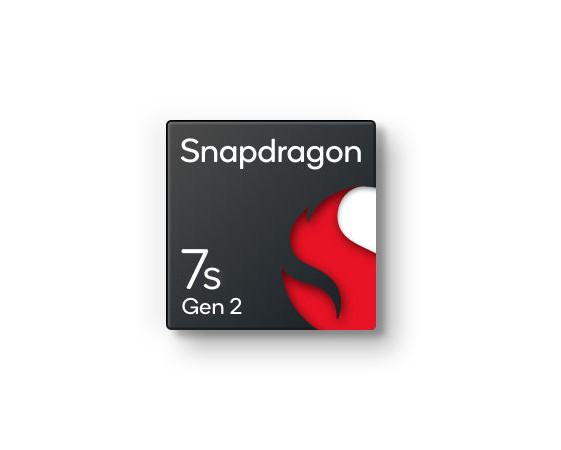
This is one of the few phones to be powered by Snapdragon 7s Gen 2 4nmMobile Platform, and it is a good upgrade compared to MediaTek Dimensity 1080 SoC in the Note 12 Pro. This has Octa-Core Qualcomm Kryo CPUs that has 4 x Cortex A78 core clocked at 2.4GHz and 4 x Cortex A55 cores clocked at 1.96GHz. There is Adreno 710 GPU that decent gaming performance.
The phone Graphene Sheets to help keep the phone cool. If you play intensive games like Genshin Impact, it will heat up quickly. In 3D Mark wild life stress test, it scored 90.2%, and the temperature shot up from 34 to 42 degrees. That said, check out some synthetic benchmark scores below.


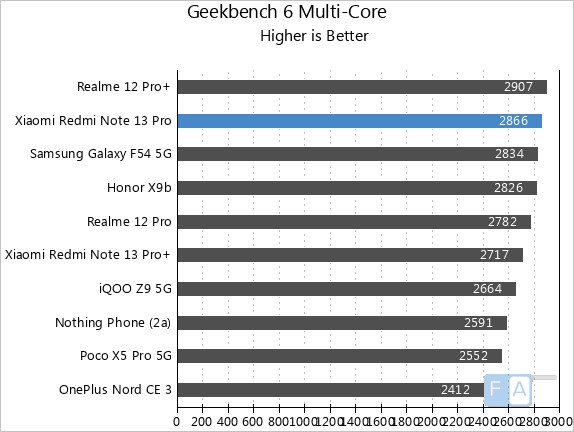
Battery life
Coming to the battery life, the phone has a 5100mAh (typical) built-in battery that lasts for a day even with heavy use, and with average use it lasts for more than a day, thanks to optimization.
Since the phone has support for 67W fast charging, it can charge up to 50% in about 15 minutes and up to 100% in about 45 minutes with the bundled 67W charger.
Conclusion
At a starting price of Rs. 25,999, the Redmi Note 13 Pro is a good upgrade to the Note 12 Pro. This has a better display, offers better performance, and the main camera offers a consistence performance, and the HyperOS is more refined. Cooling could have been better when gaming, and it still retains the same ultra-wide and 2MP macro camera.
Alternatives
Nothing Phone 2a with a more powerful SoC is a good alternative. POCO X6 is a cheaper alternative with almost similar specifications and a downgraded camera. realme 12 Pro for the same price offers a curved screen and a telephoto camera.
Pricing and Availability
The Redmi Note 13 Pro is priced at Rs. 25,999 for the 8GB + 128GB, Rs. 27,999 for the 8GB + 256GB and the 12GB + 256GB model costs Rs. 29,999. It is available from Flipkart, Mi.com, Mi Home Stores, and offline stores. There is a Rs. 2000 bank offer.
Pros
- 120Hz AMOLED display with Dolby Vision is good
- Smooth performance
- Primary camera is good with OIS
- IP54 water-resistant body
- Good battery life
Cons
- Gets heated up quickly on intensive use
- Same old ultra-wide and macro sensor
Siva Bharani contributed to this review

